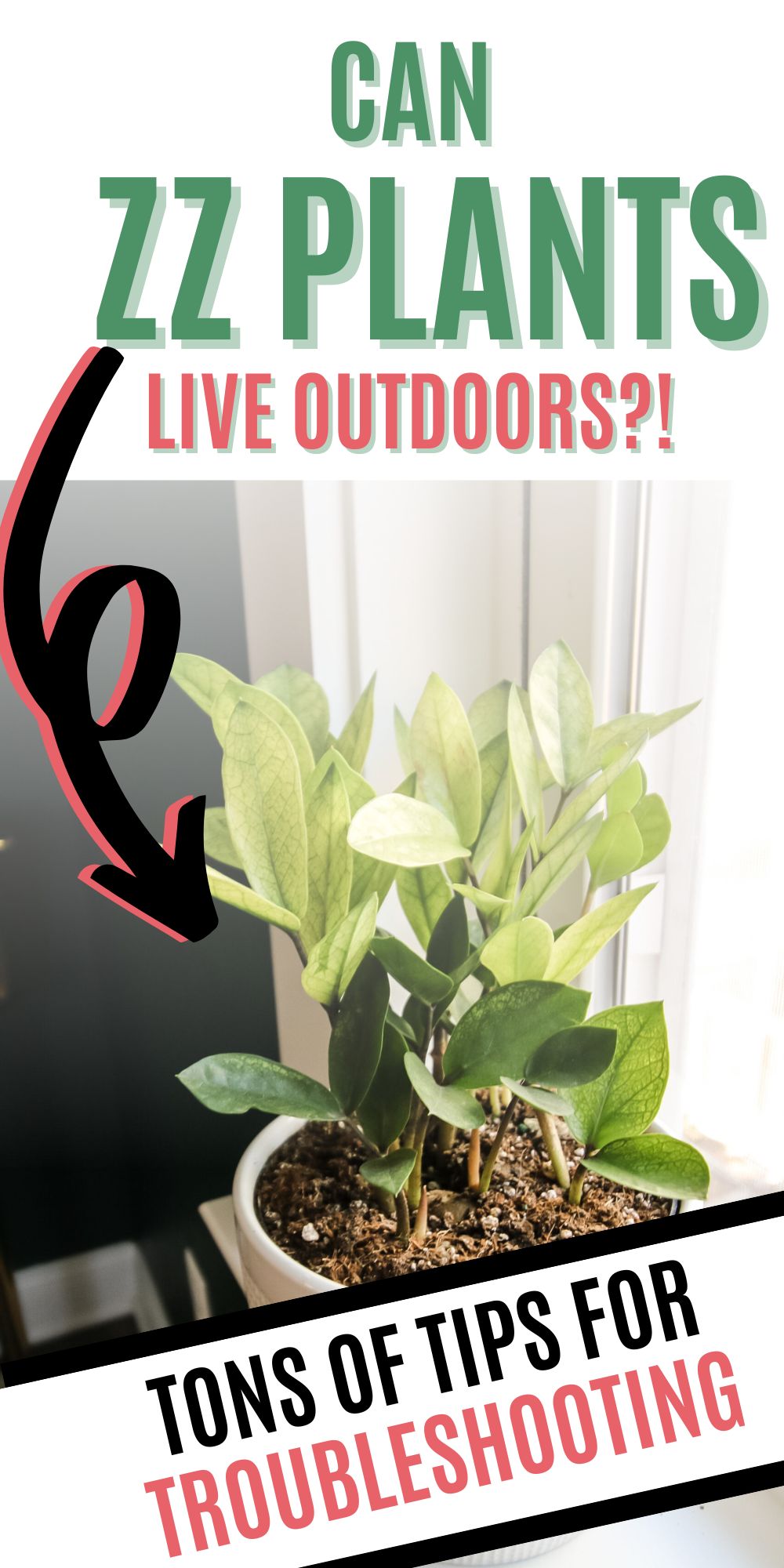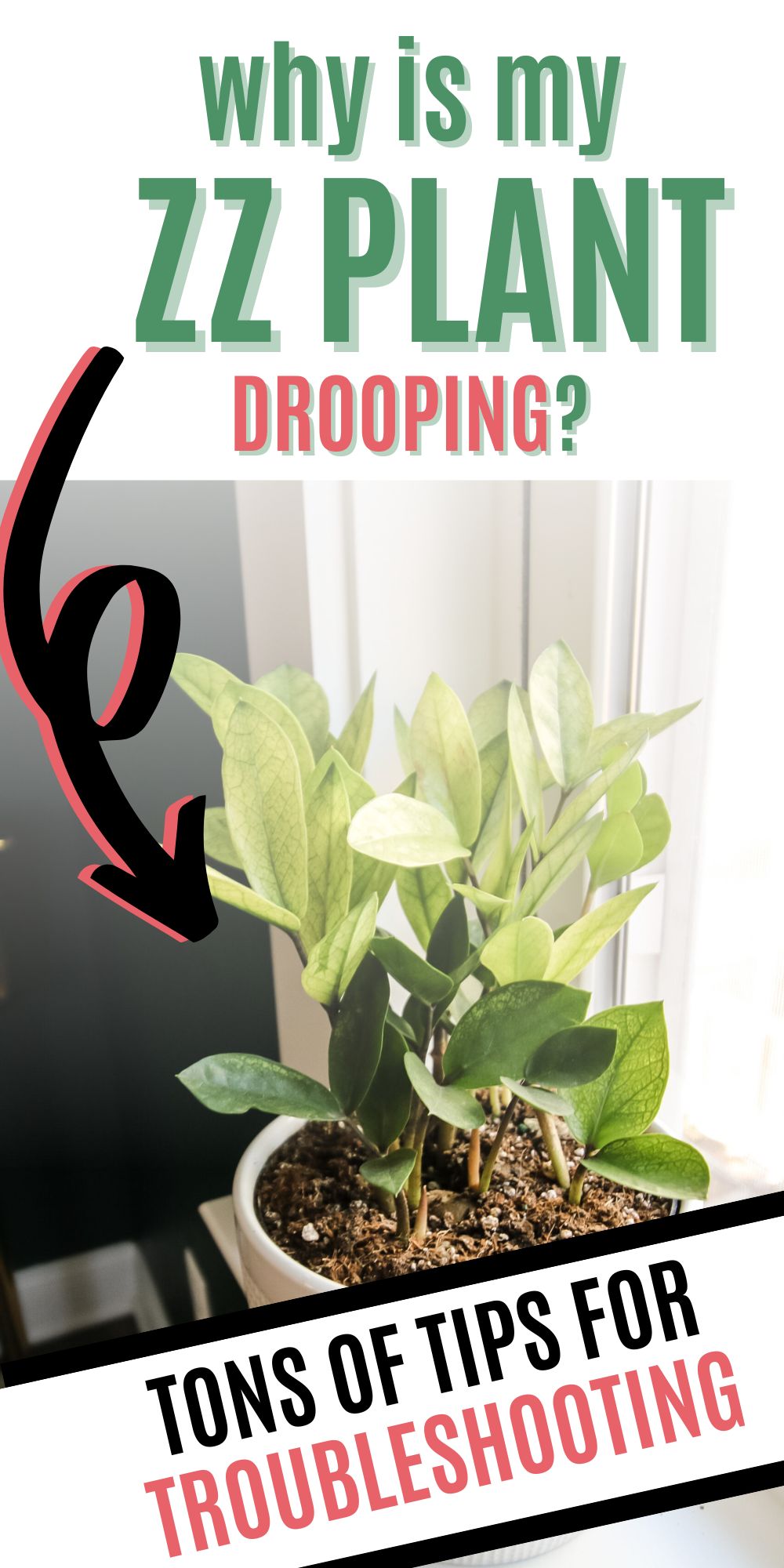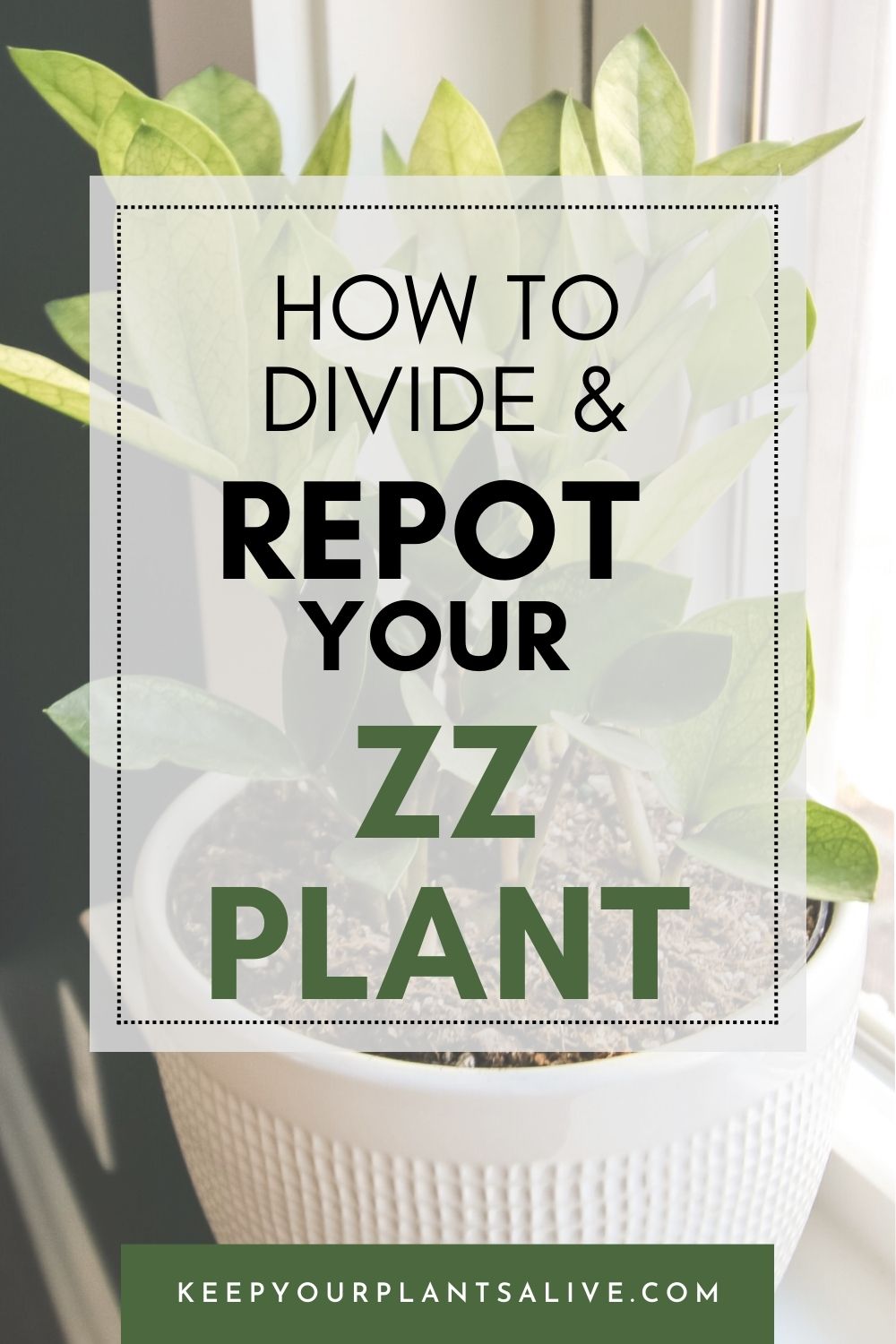Need help with ZZ plant care? Here are the top causes of ZZ plants curling and tips for how to prevent it and revive a ZZ plant!
The ZZ plant is a super popular tropical house plant and it is one of my very top suggestions for a first house plant for people who are interested in starting to keep potted plants.
I love this plant because it is so easy to care for. You don't have to water it very often, it can do just fine with low light, and it needs very little pruning.
Plus, ZZ plants have a totally unique look, different from your average trailing or vining tropical house plant.
If you have a ZZ plant that is not thriving, don't beat yourself up about it. There are some really common care problems that can lead to issues with your plant.
Today I want to focus specifically on ZZ plant leaves curling, the causes of that, and how to remedy and prevent it.
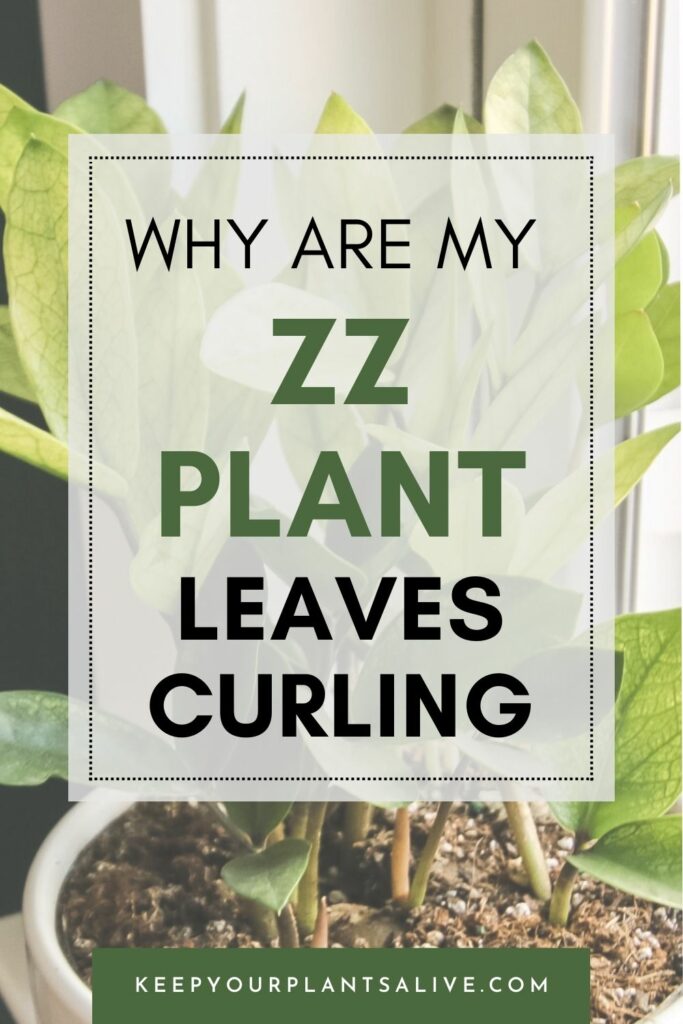
Understanding the ZZ Plant
The ZZ plant, scientifically known as Zamioculcas zamiifolia, is a hardy and attractive perennial plant native to Eastern Africa, specifically found in countries like Kenya, Tanzania, and Zanzibar.
It belongs to the Araceae family, commonly known as the aroid family, which includes other popular indoor plants like peace lilies and philodendrons.
Characteristics of the ZZ Plant
Here are some of the characteristics that make the ZZ plant great?
Foliage
One of the most striking features of the ZZ plant is its glossy, dark green leaves. The plants consist of several pairs of leaflets attached to a central stem, resembling a feather. This gives the plant an elegant and tropical appearance.
Growth Pattern
ZZ plants are slow-growing and can reach a height of 2 to 3 feet when mature. They have upright, bushy growth, making them an excellent choice for both tabletops and floor planters.
Rhizomes
ZZ plants have thick, underground rhizomes that store water, allowing the plant to survive extended periods of drought. These rhizomes serve as a reservoir, providing the plant with the ability to endure neglect and minimal watering.
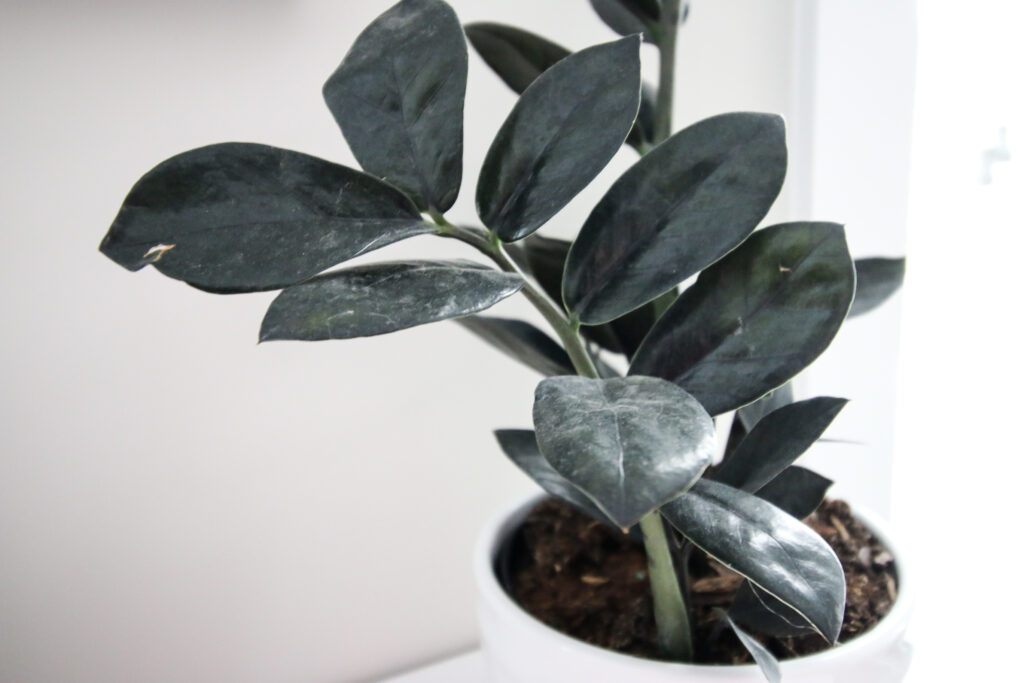
Preferred Growing Conditions
ZZ plants are easy to care for because their preferred growing conditions align nicely with the average house.
Light
One of the remarkable qualities of the ZZ plant is its adaptability to low light conditions. While it can tolerate bright, indirect light, it excels in low light environments where many other plants struggle.
This makes it an ideal choice for offices, dim corners, or rooms with limited natural light.
Watering
ZZ plants are drought-tolerant and do not require frequent watering. In fact, it's more common for people to overwater them than to underwater them!
Overwatering can lead to root rot, so it's essential to allow the soil to dry out between waterings. The water-storing rhizomes play a crucial role here, ensuring the plant has a backup water supply during dry periods.
Soil
Well-draining soil is essential to prevent waterlogged roots. A cactus or succulent potting mix works well, allowing excess water to escape easily and reducing the risk of overwatering-related issues.
Temperature and Humidity
ZZ plants prefer average room temperatures between 65°F to 75°F (18°C to 24°C). They are relatively adaptable to different humidity levels, thriving in typical indoor conditions. However, they can benefit from occasional misting, especially in dry indoor environments.
Resilience to Neglect
The ZZ plant's ability to thrive in low light and its water-storing rhizomes make it incredibly resilient to neglect. Even in situations where other plants might wither, the ZZ plant can continue to grow and maintain its lush appearance.
This resilience, coupled with its unique foliage, makes it a favorite choice for indoor gardeners, especially those with busy lifestyles or limited experience in plant care.
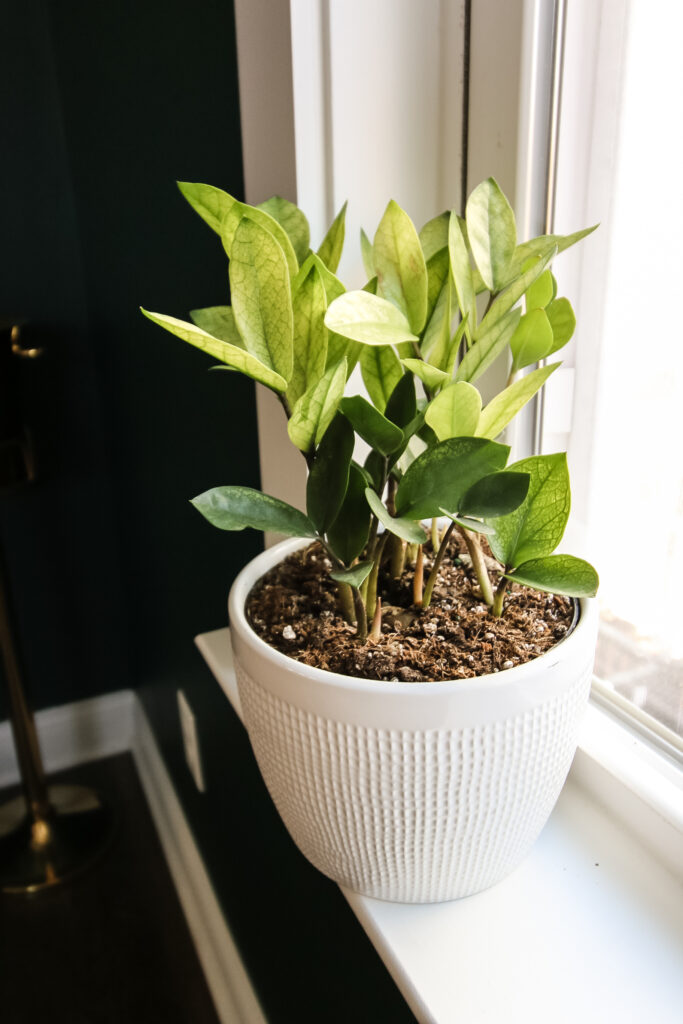
Why are my zz plant leaves curling?
The most common causes of curling ZZ plant leaves are:
- overwatering
- underwatering
- incorrect lighting
- pests and diseases
- root-bound plant
- inadequate humidity
- cold temperatures
Here are the things to look out for and solutions for each of these major ZZ plant care problems!
Problem: Overwatering
Over eager plant parents can sometimes show their plants too much love in the form of overwatering. Since ZZ plants have an underground rhizome, this bulb can get rotten if it sits in pooling water.
Once the bulb rots, the plant can no longer absorb nutrients and it will begin to die off. This is an extreme, but curling leaves could indicate that your plant is headed in that direction.
Test the soil. If it feels super wet, is stinky, or is attracting gnats, it's probably overwatered.
Solution: Allow the soil to dry out completely before watering again. Ensure the pot has drainage holes to prevent water accumulation at the bottom.
Here's our complete guide on how to dry out overwatered soil.
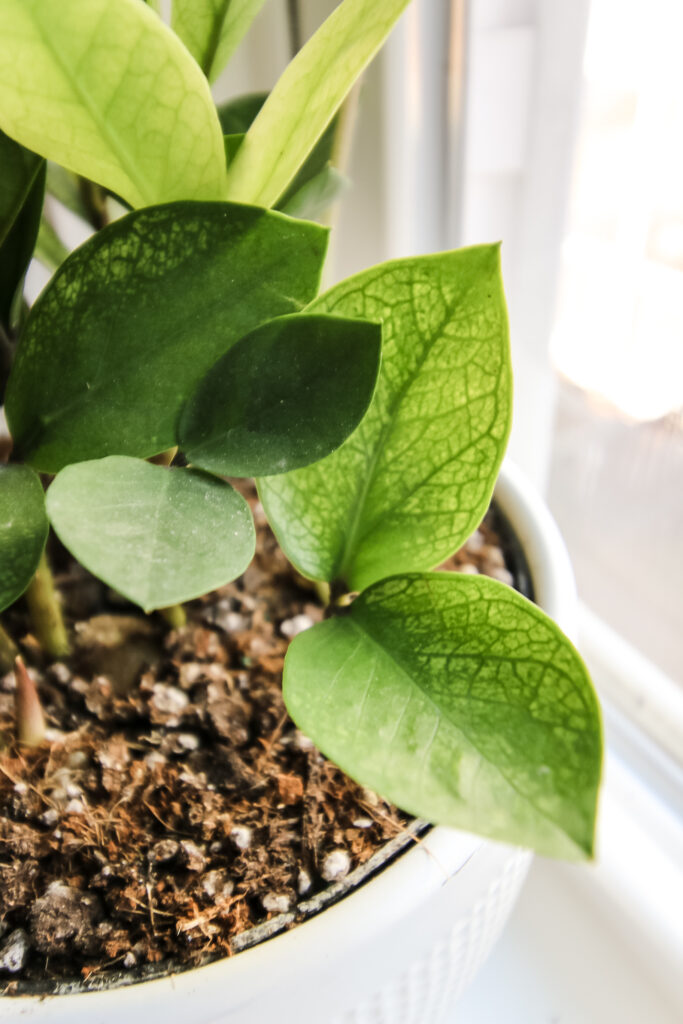
Problem: Underwatering
On the same note but the opposite hand, zz plant leaves can curl as a result of under watering. In this case, the leaves will look wrinkled and withered. The soil will be dry, hard, and compact.
While these plants can go a while without water, they cannot go forever. Give the plant a good water and up your watering schedule!
Solution: Water the ZZ plant thoroughly, ensuring water seeps through the drainage holes. Check the soil regularly and water when the top inch is dry.
Problem: Incorrect Lighting
ZZ plants are advertised as working well even in no light. While they are great low-light houseplants, they do still need light to survive.
If your leaves are curling and the watering seems fine, I suggest moving it to a brighter spot to see if your plant perks up. It can only help at this point!
Solution: Place the ZZ plant in bright, indirect light. Rotate the plant regularly to ensure all sides receive equal sunlight. Consider using grow lights for consistent lighting indoors.

Problem: Pests and Diseases
Of course, there is always the possibility of a pest infestation on your plant. This is not a great situation to be in.
If you find your plant has pests, the first thing you should do is move it away from other plants to help keep it contained!
Solution: Inspect the plant regularly for signs of pests like spider mites or mealybugs. Treat infestations with neem oil or insecticidal soap. Quarantine the plant if necessary to prevent the spread of pests.
Problem: Root-bound Plant
Your ZZ plant might have outgrown it's pot and therefore does not have enough space or soil to get the nutrients that it needs.
Luckily, this problem has a simple solution!
Solution: Repot the ZZ plant into a larger container, allowing its roots to spread. Choose a pot with drainage holes and use well-draining soil to promote healthy root growth.
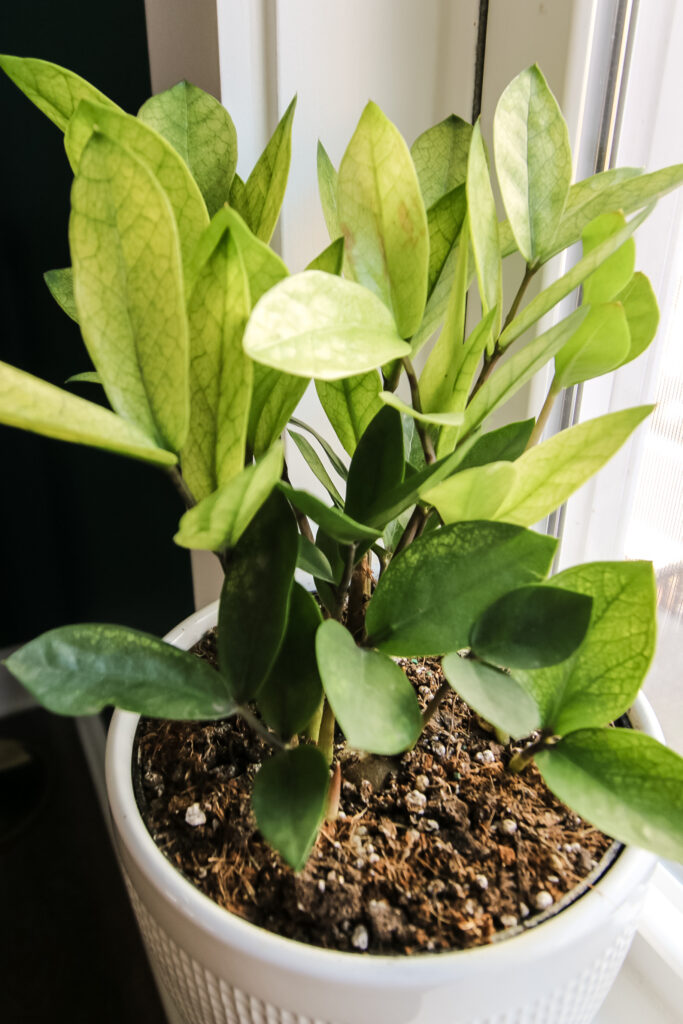
Problem: Inadequate Humidity
Remember - ZZ plants are tropical plants natively from humid rainforests. They will dry out - and the leaves may curl - in dry rooms.
This is especially true int he winter when your heat is running and blasting hot air on these delicate plants!
Solution: Increase humidity around the plant by misting it regularly. Place a humidifier nearby or group plants together to create a microclimate with higher moisture levels.
Problem: Cold Drafts or Temperature Extremes
Once again, these are tropical plants. They like warm temperatures - or at least, stable temperatures.
Beware of cold drafts or wild fluctuations of temperature. If a plant goes into shock, the first thing that it sacrifices will be it's leaves.
Solution: Keep the ZZ plant away from cold drafts, open windows, or heating/cooling vents. Maintain a consistent room temperature, avoiding sudden fluctuations that can stress the plant.
Want more ZZ plant topics?
- Raven ZZ plant care guide
- The Best ZZ Plant Soil
- Why is my ZZ plant getting yellow leaves?
- Why is my ZZ plant not growing?
- Why is my ZZ plant turning brown?
Free printable ZZ plant care guide
Join the (free!) KeepYourPlantsAlive+ community to access this exclusive printable plant care guide! Once you sign up, you can right click & save the JPG care guide. Or keep scrolling for more!
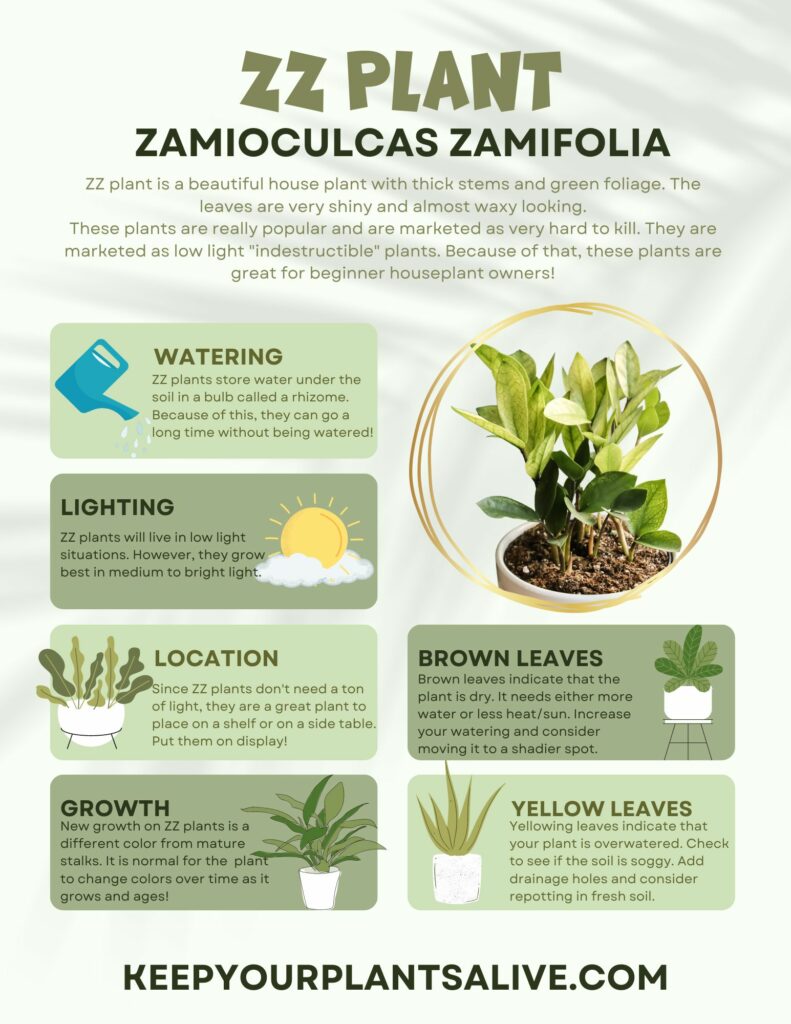
Thanks for reading!


Hey there, I'm Morgan, a houseplant enthusiast from sunny Charleston, South Carolina. Growing up surrounded by my mom's lush orchids and African violets, I discovered the magic of bringing nature indoors. Thanks to the pandemic, I delved deeper into houseplants, discovering their power to uplift moods and transform spaces. I'm here to spill all my secrets, helping you pick the perfect houseplant - and make it happy. Let's keep your plants alive, together! 😊


